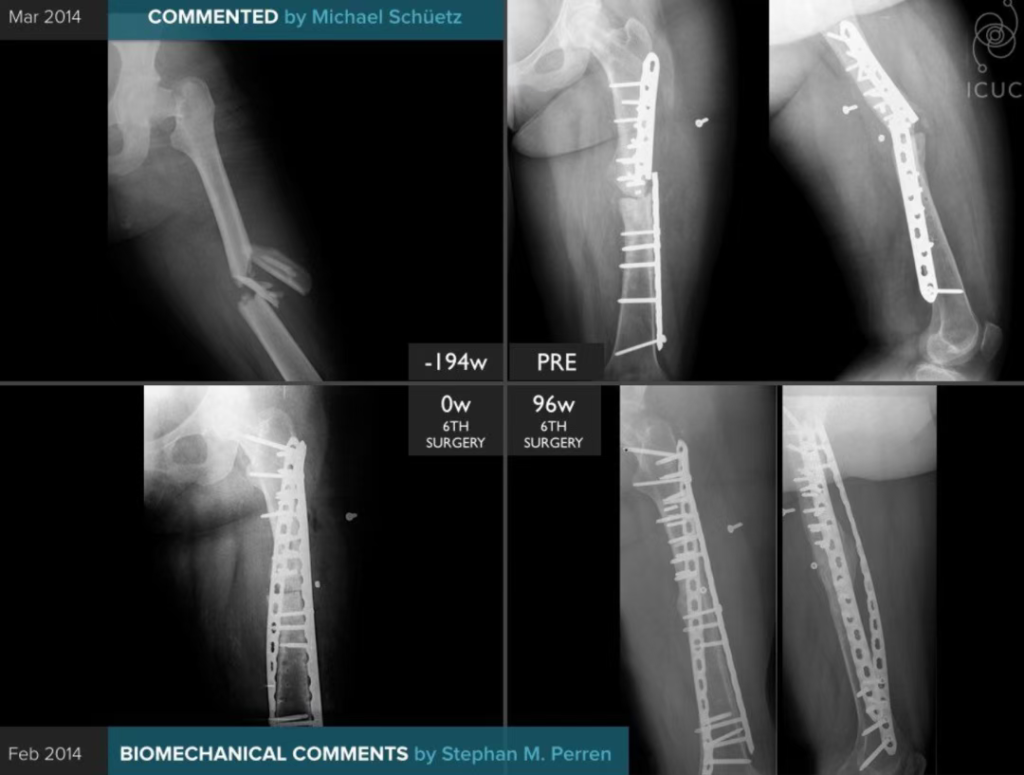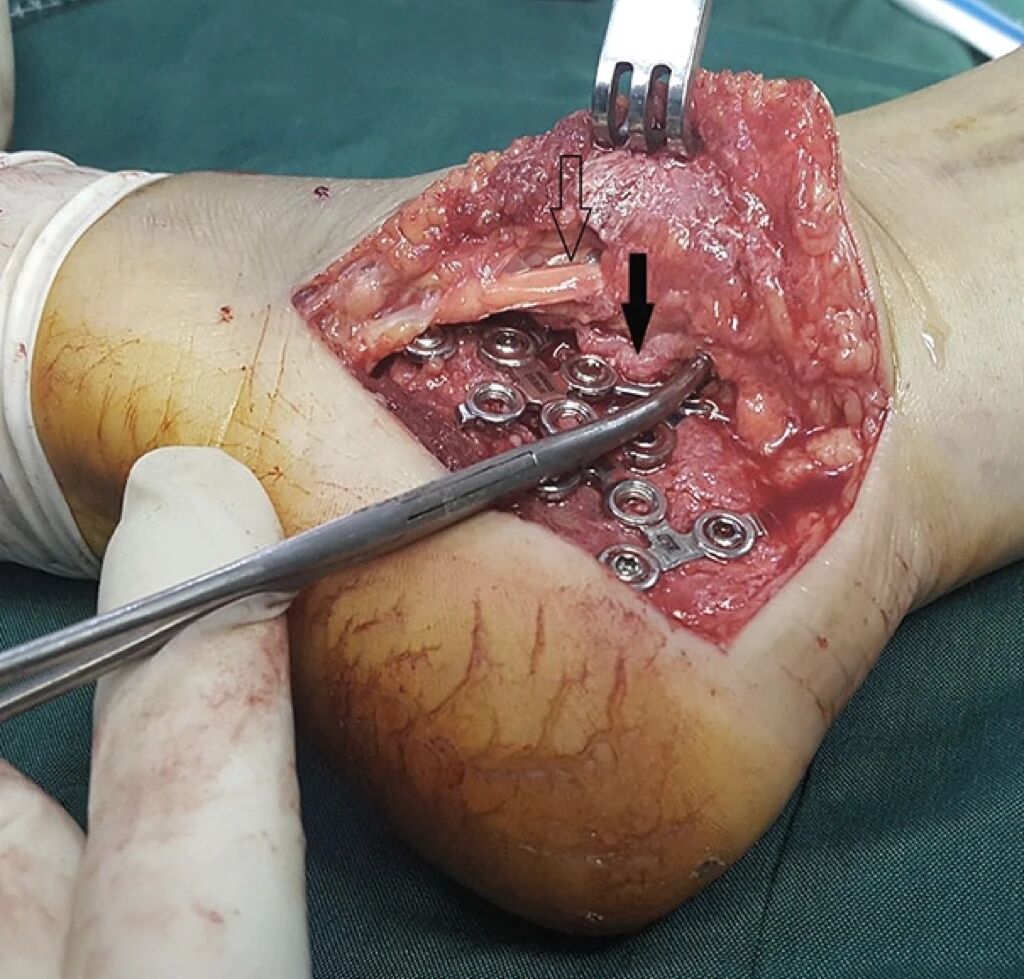Clavicle fractures account for 3%–5% of all adult fractures and approximately 32% of shoulder girdle fractures. Among these, the distal third of the clavicle is particularly susceptible due to its biomechanical vulnerabilities. Although bilateral distal clavicle fractures are extremely rare, they present unique challenges in terms of diagnosis and treatment. This article explores the key features of bilateral distal clavicle fractures, their classifications, and the optimal treatment strategies.
Understanding Distal Clavicle Fractures
The distal third of the clavicle plays a critical role in shoulder stability, largely due to the coracoclavicular (CC) ligaments, which include the trapezoid and conoid ligaments. Fractures in this region can compromise the acromioclavicular (AC) joint and lead to shoulder girdle instability, especially if the CC ligaments are disrupted.
Mechanism of Injury
Distal clavicle fractures often result from:
- Direct trauma (e.g., motor vehicle accidents, falls).
- Indirect trauma, such as a fall onto an outstretched arm with the shoulder in abduction.
Classification Systems
The Neer classification is widely used for distal clavicle fractures:
- Type I: Fractures distal to the CC ligaments with minimal displacement.
- Typically treated conservatively.
- Type II: Fractures medial to the CC ligaments, leading to displacement of the medial fragment.
- Subtypes:
- IIA: Both CC ligaments remain attached to the distal fragment.
- IIB: Only the trapezoid ligament remains attached, while the conoid ligament is disrupted, increasing the risk of nonunion.
- Surgical intervention is often recommended.
- Subtypes:
- Type III: Fractures extending into the AC joint, potentially causing post-traumatic arthritis.
Case Report: Bilateral Neer IIB Fractures

A 42-year-old female sustained bilateral distal clavicle fractures (Neer IIB) following a motor vehicle accident. Clinical examination revealed:
- Severe pain, swelling, and deformity in both shoulders.
- Radiographs and CT confirmed bilateral distal clavicle fractures, with significant displacement.
Treatment Approach
Given the high risk of nonunion and shoulder instability, surgical treatment was selected. The procedure involved:
- Sequential open reduction and internal fixation (ORIF) of both clavicles using clavicular hook plates.
- Postoperative immobilization with Velpeau slings for two weeks, followed by progressive rehabilitation exercises.
Outcome
Radiographs at 4, 8, and 12 weeks demonstrated complete fracture healing. At the 5-year follow-up, the patient reported full shoulder function with no complications, and the hardware was left in place per the patient’s preference.
Conservative vs. Surgical Treatment: Making the Right Choice
Challenges of Conservative Treatment
While conservative management is often the first-line approach for non-displaced fractures, it is less effective for bilateral distal clavicle fractures due to:
- High nonunion rates (especially in Neer IIB fractures).
- Potential for shoulder girdle dysfunction caused by instability.
Surgical Options
Surgical fixation is the preferred approach for displaced fractures, particularly in bilateral cases. Common techniques include:
- Hook plates: Effective for stabilizing distal fractures but may cause subacromial impingement or AC joint arthritis.
- Locking plates: Provide rigid fixation with fewer complications but require precise placement.
- CC ligament reconstruction: Used in cases with severe ligament disruption.
Key Considerations
- Fracture type: Neer II fractures, especially IIB, typically require surgery due to their unstable nature.
- Patient factors: Age, activity level, and comorbidities influence treatment decisions.
- Potential complications: Hardware irritation, infection, and joint stiffness must be weighed against the benefits of surgical stabilization.
Review of Literature
Several studies highlight the importance of surgical intervention for bilateral distal clavicle fractures:
- Zhang et al. reported excellent outcomes in a 16-year-old patient treated with hook plates.
- Qi et al. documented successful recovery using reconstruction plates for bilateral midshaft fractures.
- Sambandam et al. emphasized that distal fractures are inherently unstable, making surgery the optimal choice.
- Wang et al. demonstrated the efficacy of titanium cables and locking plates, noting low complication rates.
However, some authors caution against the routine use of hook plates due to the risk of subacromial osteolysis and recommend careful patient selection.


Conclusion
Bilateral distal clavicle fractures, particularly Neer IIB types, are rare but pose significant challenges due to the potential for instability and nonunion. Accurate diagnosis requires a thorough clinical and radiological evaluation. While conservative treatment may suffice for non-displaced fractures, surgical fixation is the gold standard for displaced bilateral fractures to ensure anatomical reduction, stability, and optimal functional recovery.
Disclaimer:
This article and all articles on this website are for reference only by medical professionals; specific medical problems should be treated promptly. To ensure “originality” and improve delivery efficiency, some articles on this website are AI-generated and machine-translated, which may be inappropriate or even wrong. Please refer to the original English text or leave a message if necessary. Copyright belongs to the original author. If your rights are violated, please contact the backstage to delete them. If you have any questions, please leave a message through the backstage, or leave a message below this article. Thank you!
Like and share, your hands will be left with the fragrance!




